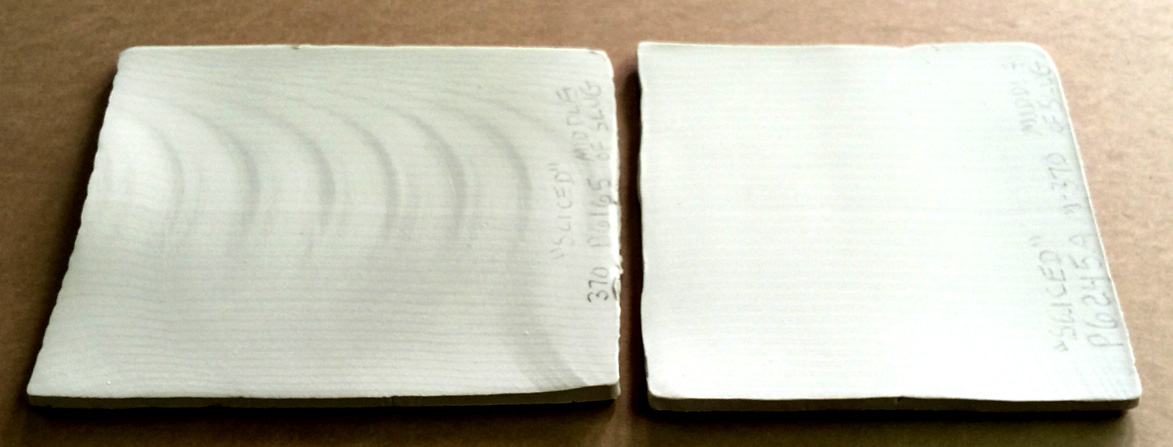Another reason why clay should be wedged or kneaded
Left: A high-contrast photo of a cut across the cross section of an eight-month-old slug of Plainsman M370 pugged clay. Right: A cut of a just-produced material (which will exhibit the same pattern in eight more months). You can feel different stiffnesses as you drag your finger across this clay, these are a product of the aging process combined with the natural lamination that a pugmill produces. Clearly, the older material needs to be insight-live.com/glossary/374">wedged before use in hand building or on the wheel.
Pages that reference this post in the Digitalfire Reference Library:
Micro Organisms, Wedging, Laminations

This post is one of thousands found in the Digitalfire Reference Database. Most are part of a timeline maintained by Tony Hansen. You can search that timeline on the home page of digitalfire.com.
